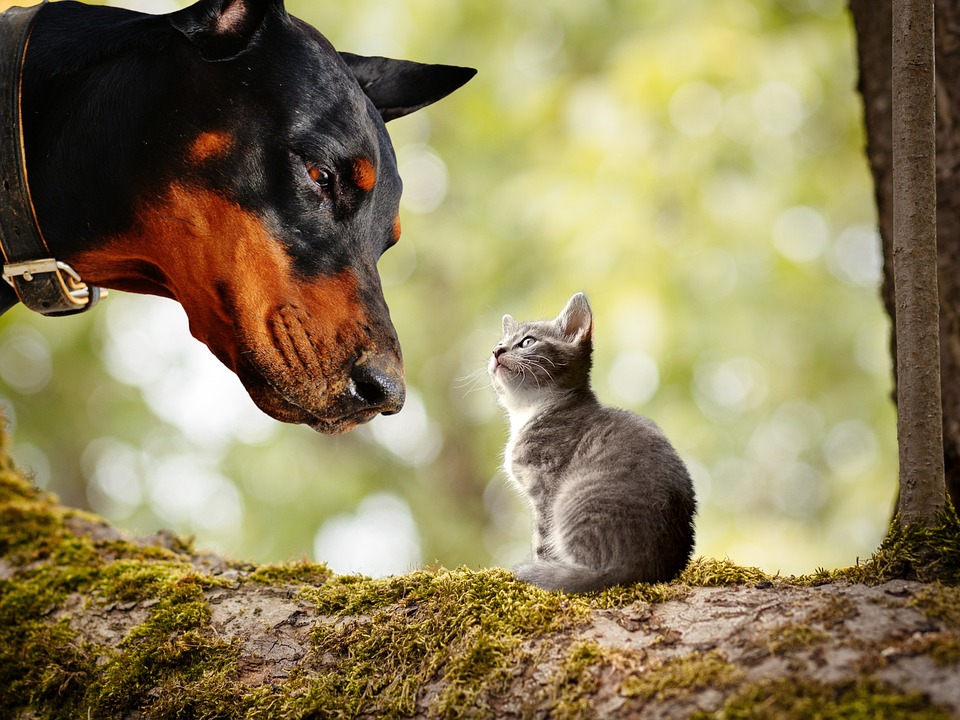Introducing a new dog to an older cat can be a daunting task, but with the right approach, it can lead to a harmonious and loving relationship between your furry friends. In this comprehensive guide, we will provide you with expert tips and guidelines to ensure a smooth transition and successful introduction.
First and foremost, it’s important to understand the basics of dog and cat behavior. Dogs are pack animals and have a hierarchical structure, so it’s crucial to establish yourself as the pack leader and ensure your dog understands their place in the hierarchy. Additionally, dogs have socialization needs, so it’s important to expose them to different environments, people, and animals from an early age. Understanding canine communication signals is also essential in recognizing signs of stress or aggression.
On the other hand, cats are territorial animals and can be quite possessive of their space. They communicate through body language, so it’s important to be able to read their signals to understand their comfort levels. Cats also thrive on routine and prefer a predictable environment, so maintaining their preferred routines during the introduction process is crucial.
Preparing the environment is another key step in introducing a new dog to an older cat. Establishing separate safe spaces for both pets is essential to ensure they have their own areas to retreat to when needed. Providing a sanctuary for your cat, such as a high perch or a room with a door, allows them to observe the new dog from a safe distance. Similarly, creating a den for your dog, such as a crate or a specific area with their bed and toys, gives them a sense of security.
Scent swapping is an effective technique to help familiarize your pets with each other’s scent before a face-to-face introduction. This can be done by exchanging bedding or toys between the dog and cat. Additionally, using pheromone products, such as diffusers or sprays, can help create a calming environment for both pets.
When it comes to the introduction itself, taking a gradual approach is key. Start by using a visual barrier, such as a baby gate or a screen, to allow your pets to see and smell each other without direct contact. Controlled scent introduction, where you allow your dog and cat to sniff each other’s scent through a closed door, can also help ease the transition. Short supervised visits, with the dog on a leash, can gradually introduce them to each other’s presence in a controlled manner.
Positive reinforcement is crucial during the introduction process. Reward-based training, where your dog is rewarded for calm and appropriate behavior around the cat, can help reinforce positive associations. treats and praise can also be used to reward both pets for calm and friendly interactions. Clicker training, a popular positive reinforcement technique, can also be effective in shaping desired behaviors.
Despite careful planning and preparation, challenges may arise during the introduction process. If your cat shows aggression towards the dog, it’s important to understand the source of the aggression, which could be fear or territoriality. Consulting with a professional behaviorist can provide valuable insights and strategies to address the aggression. Slow reintroduction techniques, where the dog and cat are gradually reintroduced in short and supervised sessions, can also help ease tensions.
In cases where the dog shows aggression towards the cat, supervised interactions are crucial to ensure the safety of both pets. Training for impulse control, such as teaching your dog to sit or stay when the cat is present, can help manage their behavior. Separation and management strategies, such as using baby gates or crates to separate the pets when necessary, can also help prevent any potential conflicts.
To address common concerns, we have included a section of frequently asked questions. These questions cover topics such as the timeline for dogs and cats to get along, leaving them alone together, preventing the cat from feeling threatened, signs of a successful introduction, and ways to speed up the process.
In conclusion, introducing a new dog to an older cat requires careful planning, patience, and understanding of their individual needs and behaviors. By following the expert tips and guidelines provided in this comprehensive guide, you can create a peaceful and harmonious environment for both your furry friends. Remember, each introduction is unique, and it’s essential to be flexible and adapt to the specific dynamics between your dog and cat. With proper preparation, gradual introductions, and positive reinforcement, you can foster a loving and lasting bond between your new canine companion and your older feline friend.









